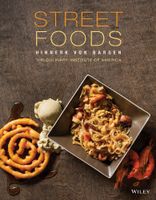Advertisement
Europe
By Hinnerk von Bargen and Culinary Institute of America
Published 2015
The cuisines of Europe developed over centuries with limited foreign influence. New ingredients, often introduced from the New World or colonies abroad, commonly came without guidance on original cooking methods. Assimilated into the culinary culture, these ingredients facilitated the conception of new dishes with a distinct spirit of the local cuisine. Case in point is curry powder, created in the United Kingdom by colonists returning from the Indian protectorate. Missing and craving the spicy and flavorful foods from abroad, they would often enhance the local food with a sprinkle of Indian spices. Soon after, variations of this spice mix became known as curry powder; in India, comparable spice mixes are known as masala. The word curry might have been derived from kari, the Tamil word for “sauce,” or from karahi, Hindi for a ubiquitous all-purpose cooking vessel in Indian kitchens. Curry powder has made its way into many cuisines. The famous German Currywurst gets a generous sprinkle of the blend after being doused in a spiced ketchup or tomato sauce.

